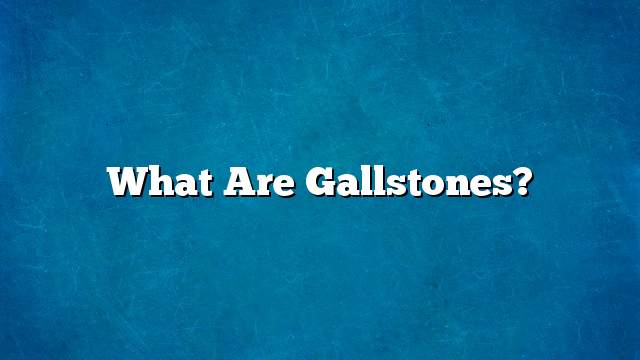Gallbladder is a small sac that stores the bile of the liver and is found only under the liver. This juice is produced by the bile duct to the small intestine to help break down the foods we eat, especially fatty foods. The bitterness does not cause too much trouble or anxiety, but if something slows down or prevents the flow of bile from the gallbladder, This obstacle is called gravel or gallstones. How these stones are formed in gallbladder and what are the symptoms of stones gallstones
What are Gallstones?
Gallstones in gallbladder are a piece of solid material that forms in the gallbladder. These gravels develop because of cholesterol and yellow pigments sometimes form solid particles. The gallstones are divided into two types: gallstones, yellow or dark green, 80% of the gallstones and the second type are yellowish, smaller and darker in color than bilirubin.
What are the symptoms of gallstones?
A person suffering from gallbladder disease has symptoms of these symptoms. The patient or the patient has pain in the back, upper abdominal area and pain may last for several hours. And feeling dyspepsia and vomiting and suffer from problems in the digestive system, which causes swelling, indigestion and heartburn in the stomach. The patient suffers from biliary colic and is exposed to severe bouts of pain caused by obstruction of the gallbladder due to gallstones and biliary colic usually lasting one or two hours and can be rarely repeated. Grits also cause inflammation of the gallbladder, where the stones in the gallbladder irritate the gallbladder wall and become swollen and painful.
Symptoms of gallstones may vary depending on the type of gallbladder in the body in terms of size, amount of gravel, and the amount of time accumulated and formed stones, but most of the symptoms of gall bladder begin with pain in the upper abdomen either in the upper right or center. Feeling of pain under the right shoulder or back and feeling pain increases badly after eating a meal especially fatty foods, feeling fullness of the abdomen, indigestion, increased gas and chronic diarrhea usually occurs after meals and up to ten times a day, skin color change usually gets yellowish person Skin and eyes, and change the color of the stool where the person observes the abnormal stool color is different from the natural color and becomes lighter compared to the clay.
These symptoms do not affect the patient at one time, and when the pain increases significantly is not likely prefers to speed up the doctor for the tests and later resort to the doctor to break the stones in the gall bladder to avoid these painful symptoms.
